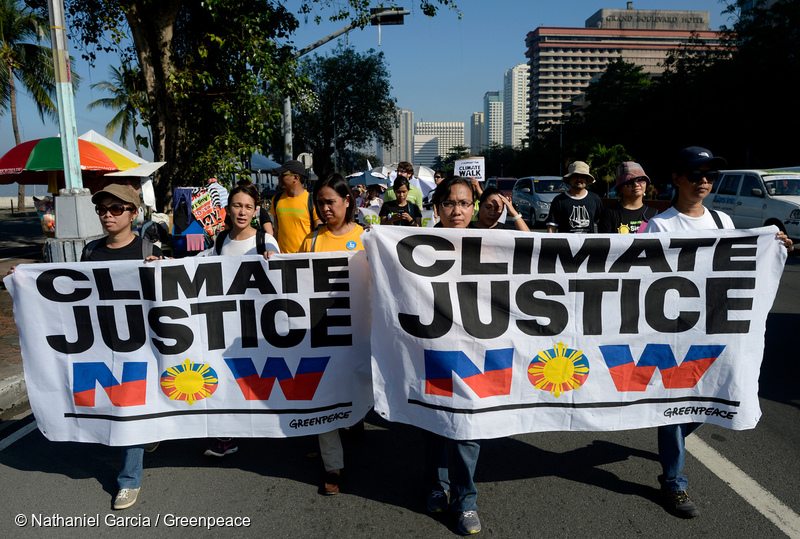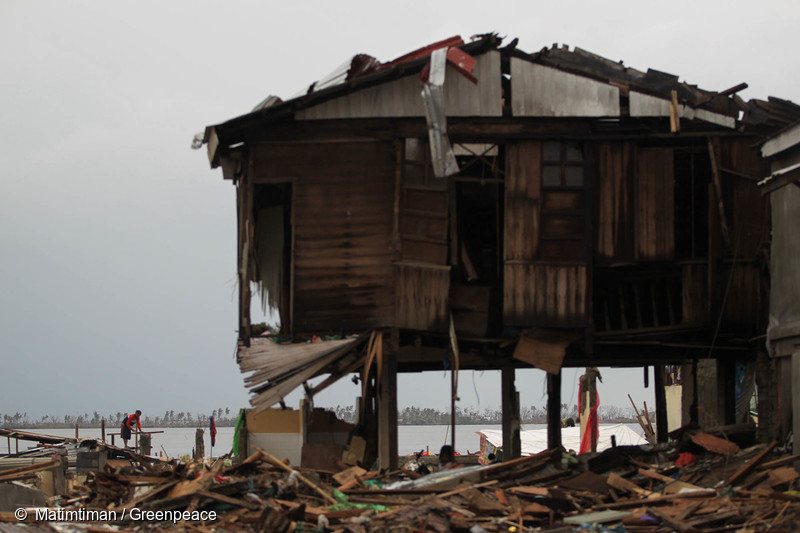A version of this post was originally published by Greenpeace Philippines.
A lot has been said about Filipinos’ resiliency, friendliness, and ability to laugh and make jokes in the face of adversity. We are constantly in the list of top countries when it comes to disasters, corruption, and vulnerable sectors. And yet we are also in the top lists when it comes to social media, wiring money home and connecting to friends and loved ones in general. We have the largest and most extended of families. We’re a people who grow our nests rather than leave them.
And so I think the defining characteristic of Filipinos is not exactly resiliency, but rather our capacity to love. This is the thing that has kept us going and eventually smiling through the worst challenges.
The writer Sherwin Nuland once said: “If you want to talk about what motivates people to keep existing as a community, you’ve got to talk about love.”
Chapter 1: A Mother’s Love
This is true for Ate (which translates to ‘big sister’) Elma, 42, who lived her whole life in the coastal municipality of Alabat until she had to relocate due to the impacts of climate change.
Elma describes herself as a “humble citizen,” subsisting on selling vegetables and fish from her family’s farm and fishing grounds. It was a happy, simple life for her, her husband, and their growing family.
But then Elma started to see the fish catch steeply decline — something UN scientists have predicted will continue as Earth’s temperature rises and ocean acidification worsens. This has cut into her family’s ability to make a living, and in turn their children’s health and education.
Heartbroken but resolute, she and her husband made the choice to move to a nearby island.

Demonstrators participate in the “Climate Walk: A People’s Walk for Climate Justice” in Manila, Philippines in 2014.
“The decision wasn’t easy, but it was for our children. It became easier when I thought about giving them a better future,” she told me.
Having seen firsthand the effects of climate change not only on her neighbors but her own children, Elma is now a voice for her community and a leader and mobilizer for climate justice.
Chapter 2: A Daughter Comes Home
Labeled the deadliest storm on record to ever make landfall anywhere, Typhoon Haiyan left a trail of broken hearts in its wake three years ago. It certainly did not spare Joanna Sustento, 25, who lost her parents, her brother and sister-in-law, and her three-year-old nephew Tarin when the typhoon struck.
Joanna’s older brother Kuya also survived Haiyan, and she says she feels much closer to him now.
“We used to fight all the time, but after losing our entire family, our instinct to protect each other and to be there for each other came about so naturally. Tragedy and loss has a way of reminding you of what’s important in the end,” she said.
But such clarity and self-regard did not come easily. For a time after the tragedy, Joanna avoided seeing relatives and friends because she did not want to be pitied.
“I was placed in this awkward position where they didn’t know what to say or how to act around me,” she told me.
Dealing with pain and guilt and with most of her family gone, Joanna turned to writing for solace. Writing became a conduit for healing, and gave her the chance to organize all her thoughts and feelings amidst the whirlpools of sorrow.
When the opportunity came to share her story to the public, she said yes, not yet realizing how much it would change her.
“I realized that the more I opened myself up to people, the more I told my story, the braver I became,” she said.
Storytelling became her home. Whether it tested her strength or made her smile, she continues to embrace it to this day.
Her love story has also broadened to include those outside of her immediate circle. A mindset she admits was not present before Haiyan.
“Before, my ambitions were just limited to putting up and operating my own business. I was only thinking of myself, and what I wanted. I didn’t really think of myself as someone who could contribute to the community. My ambitions were limited to only what I thought I could possibly achieve, it was focused on me, and my family’s security alone.
“But when Haiyan happened, I realized that we should dream for something bigger than ourselves. We should remember that we are all connected. Race, religion, culture, and tradition may separate us, but all of us cry over the same things. When the tragedy happened, it left my community broken but I came to love it even more.
“I realized that if all of us could have this passion and love for our own communities, we would strive to do what’s best for our home,” she said.

The wake of Typhoon Haiyan in Tacloban City, Philippines.
I have not been the same since meeting Ate Elma and Joanna — two women whose lives are connected by the heartbreaks climate change has caused them, but whose love for community was brought to the fore. Theirs are stories of love and of rising above the impacts of climate change that need to be retold, as they are beautiful reminders of finding strength and hope.
Desiree Llanos Dee is a climate justice campaigner with Greenpeace Southeast Asia, based in the Philippines.


